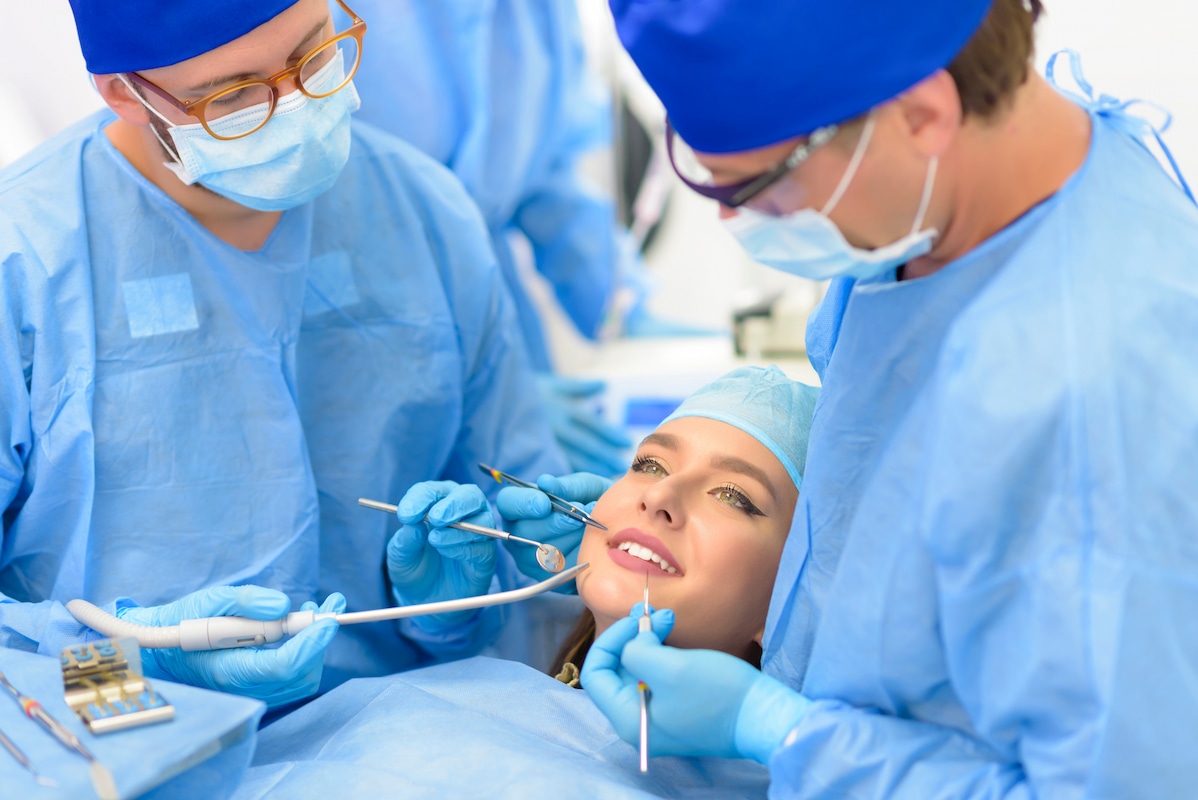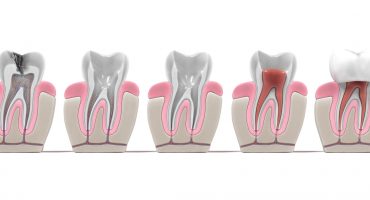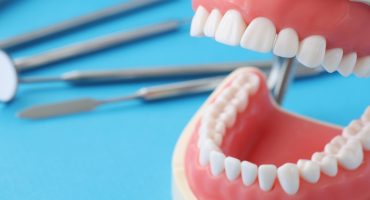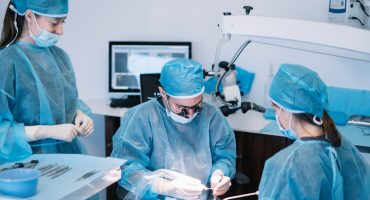Oral surgery is a specialist field within dentistry that deals with the operative treatment of deformities of the jawbone and teeth as well as injuries and illnesses in the area of oral cavity and dental apparatus.
Definition: Oral surgery
The services of oral surgery include, for example,
- the treatment of pathological changes in the area of the gums and oral mucosa,
- the correction of lip and tongue ligaments and
- the removal of cysts and tumors.
The Periodontal surgery an operative treatment of periodontitis (bacterial inflammation of the periodontium) is also part of the treatment spectrum of the oral surgeon.
A special feature of oral surgery is that during therapy benefits of surgery and dentistry go hand in hand. Therefore, the oral surgeon in addition to his job as a surgeon in practice is always a dentist for the basic care of the patient.
Other Services of Oral Surgery
An important area within the Oral Surgeon's area of responsibility beside wisdom tooth removal and root tip resection (removal of the root tip through the jawbone) is implantology (insertion of dental prostheses in the jawbone). Also, surgical treatments in the area of the root canal are among the tasks of oral surgery and contribute significantly to the preservation of tooth structure even with difficult findings.
The operations are performed in a separate surgery area on an outpatient basis. Surgery under local anesthesia is possible as well as oral surgery under general anesthesia or sedation (attenuating effect on the central nervous system).
Specialist for oral surgery - four-year training after studying dentistry
The prerequisite for training as a specialist in oral surgery is a regular degree in dentistry. After successful completion of the study, there will be at least four years of advanced training as a specialist in oral surgery in approved facilities. In order to ensure optimal full-time education, the prospective oral surgeon may not open his own dental practice during the training. At least one year of additional education is to be completed in a medical facility such as a hospital with training authorization. The training plans vary in details depending on the responsible medical association.
Due to the strictly regulated further training, the aspiring specialist for oral surgery received well-founded knowledge in theory, expertise and medical practice. The topics of the training include
- surgical procedures in the lower and upper jaw, as well as the oral mucosa and gums,
- the treatment of inflammation in the area of the face and jaw as well as
- the treatment of injuries such as jaw fracture after an accident or trauma.
Clinical Laboratory diagnostics as well as X-rays and anesthesia procedures complete the training program for dentists in training in oral surgery.
After completion of the training and successfully passed exam, the oral surgeon mastered all the techniques of a conventional dentist in conjunction with the specialized knowledge of a surgeon in the mouth. The Samis to be taken before the competent state medical chamber. Subsequently, the newly admitted dentist and specialist dentist for oral surgery may set up his own practice. In addition, some oral surgeons maintain document beds in a hospital.
Different Methods of Diagnostics in Oral surgery
Different methods are available to for the diagnosis (measures for the recognition of a finding). Depending on the case to be treated, the specialist dentist uses state-of-the-art techniques and technologies based on the latest scientific findings. The Classical clinical diagnostics as well as two-dimensional X-ray procedures are sufficient in many cases depending on the findings. For more complex diagnoses, digitized modern oral surgery offers highly accurate, state-of-the-art, three-dimensional diagnostics.
In addition to traditional computed tomography tomography (CT), dental volume tomography (DVT) is increasingly being used in oral surgery . The advantage over CT in the case of anxiety patients with claustrophobia is the examination in an open device without a tube. In addition, the radiation exposure in DVT is reduced by 80 percent. The achievable in a very short time images allow a precise and timely treatment. Therefore, this innovative type of digital diagnostics is often used in the planning of augmentation procedures prior to implantation.
The treating physician and patient thus receive the highest level of safety in the oral surgical measures in conjunction with state-of-the-art planning software for therapy. In conjunction with innovative minimally invasive techniques (operations with the least possible damage to the skin and soft tissues), the mental and physical strain on the patient is significantly reduced. Digital diagnostics, like the surgery, can be performed in separate rooms within the practice; referral to a specialist practice for X-ray diagnostics is not necessary. Oral surgeons who offer these innovative diagnostic techniques must have completed a special training with certificate.




